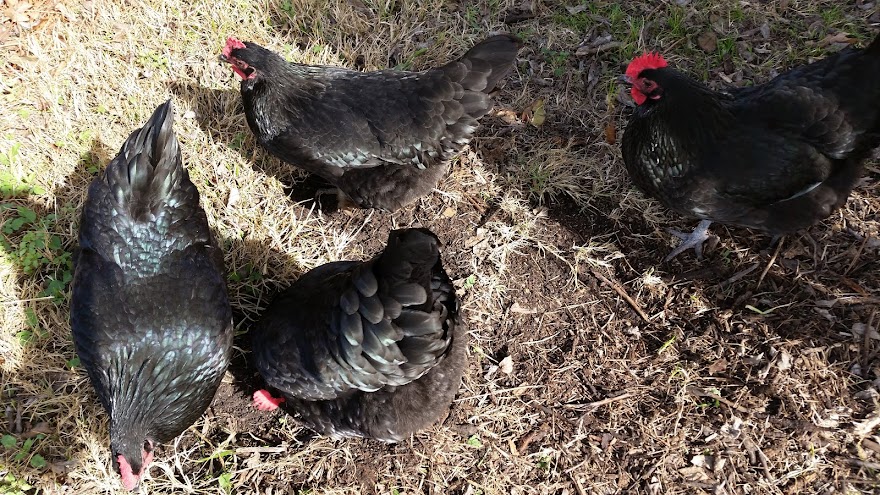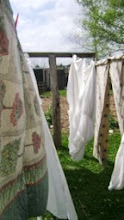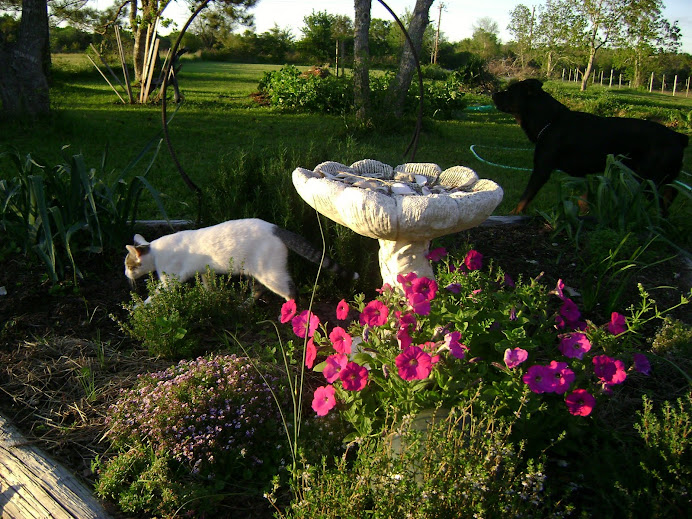 I simply can't resist a photograph of my Granddaughter Elizabeth Hope as a Ladybug in my garden. My hope is to share with her the wonders of nature in a diverse and organic garden. The Ladybug being one of the most beneficial insects for controlling aphids. Aphids can be a major pest, especially in southern states where we live in the land of the fire ant. Fire Ants actually have a mutual relationship with the aphid whereby the fire ants obtain honeydew, a carbohydrate rich excretion, from aphids that the fire ants really enjoy, so in exchange for being able to harvest this substance, the fire ants protect the aphids from other predators. Usually where ever I find aphids I will also find fire ants marching up and down the stems.
I simply can't resist a photograph of my Granddaughter Elizabeth Hope as a Ladybug in my garden. My hope is to share with her the wonders of nature in a diverse and organic garden. The Ladybug being one of the most beneficial insects for controlling aphids. Aphids can be a major pest, especially in southern states where we live in the land of the fire ant. Fire Ants actually have a mutual relationship with the aphid whereby the fire ants obtain honeydew, a carbohydrate rich excretion, from aphids that the fire ants really enjoy, so in exchange for being able to harvest this substance, the fire ants protect the aphids from other predators. Usually where ever I find aphids I will also find fire ants marching up and down the stems.The first priority to fine organic gardening practices is the organic rich compost constantly added to the soil. Although fire ants are always a constant problem, the richer your soil in organic matter, the less and less fire ants seem to enjoy making a mound in the mist of your vegetables. There are also natural organic substances to be used for helping in control of fire ants. Our favorite is Diotomacious Earth which is little crystals of silica that scratch the ant's cuticle so they dehydrate and die. This is not a full proof method by all means, but it will usually make them go somewhere else. At least they are out of my raised bed of precious heirloom tomatoes. It also appears that the less fire ants are in my garden, the less aphid problems I seem to have.
This year I was able to observe the relationships of nature in the Black-Eyed Pea patch. Our first instinct when we find a pest such as aphids is to hurry up and get rid of them before they spread into the rest of the garden. After this summers awesome display and good bugs verses bad bugs, I really began to wonder what would the good bugs eat if the bad bugs were all gone. A fairly logical question I think. So when I found aphids on just one Black-Eye Pea plant out of the whole crop, I also found three different species of Ladybugs and Ladybug larvae on the same plant. So what was I to do? I left the Ladybugs to take care of business and they took care of it very well. As you can see in the photo below the plant was loaded with black aphids with Ladybugs busy eating them.
 After a few days of close observations I could barely find any evidence that aphids had once covered the poor plant. Not only did it fully recover, it was busy making peas for me. The aphids never spread to any other part of the crop. I feel so confident now that I have no worries for next years crops. I also feel secure in knowing my precious little Ladybug Elizabeth will eat peas with no harmful chemicals or pesticides on them.
After a few days of close observations I could barely find any evidence that aphids had once covered the poor plant. Not only did it fully recover, it was busy making peas for me. The aphids never spread to any other part of the crop. I feel so confident now that I have no worries for next years crops. I also feel secure in knowing my precious little Ladybug Elizabeth will eat peas with no harmful chemicals or pesticides on them.
The best way to attract Ladybugs to your garden is growing diverse, which basically means growing an array of plants that will attract beneficial insects and act as companions for various reasons. Ladybugs are attracted to plants that have tiny white flowers. I plant things like Cilantro and Dill all over the garden. They are first up in the spring when the ladybugs are searching. Zinna's are also an attraction for ladybugs and I grow plenty. However they come up and bloom when the weather is hot so it's always an good idea to start early with other companion plants. The early bird gets the worm so to speak.
I recently came across a truley wonder project called "The Lost Ladybug Project." It was there that I learned that 0ver the past twenty years several native ladybugs that were once very common have become extremely rare. I'm learning that the ladybug is not just red with black spots. There are several different kinds of ladybugs. Some orange with spots, some solid red, some solid orange..etc. They are working to find what is happening to the ladybug by having people from around the USA photographing them and sending the pictures in. Their site is a must read! http://www.lostladybug.org/index.php There are many ways your children can participate. What a great educational experience for them. I can't wait until spring when I can start sharing with my Grandchildren all about the Ladybugs!
Happy Gardening!
Pammy











.png)
.jpg)














What a little cutie pie. I've been sharing your blog with some of the gardening girls that I work with. They'll love this one. They are all about the ladybugs in the Lowe's garden dept.
ReplyDeleteTake good care,
Karen